Shadow Circus@Kochi-Muziris Biennale
Kashi Townhouse, Quiros Street, Fort Kochi, Kerala (December 12, 2022 - April 10, 2023)
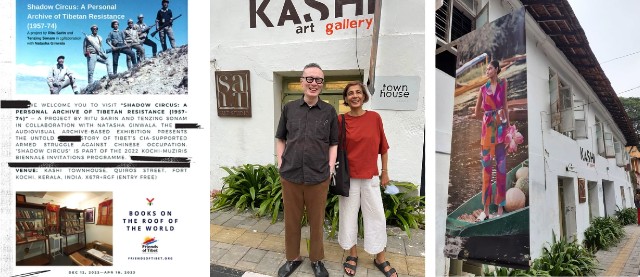
Friends of Tibet welcome you to visit "Shadow Circus: A Personal Archive of Tibetan Resistance (1957-74)" — a project by Ritu Sarin and Tenzing Sonam in collaboration with Natasha Ginwala and "Books From the Roof of the World" by Friends of Tibet. Presented by Kochi-Muziris Biennale 2022 in collaboration with White Crane Films and White Crane Arts & Media and made possible with additional support from the Gujral Foundation. This audiovisual archive-based exhibition presents the untold story of Tibet's CIA-supported armed struggle against Chinese occupation. "Shadow Circus" is part of the 2022 Kochi-Muziris Biennale Invitations Programme. (Venue: Kashi Townhouse, Quiros Street, Fort Kochi, Kerala, India. Location: X67R+RGF. Entry free and open to all)
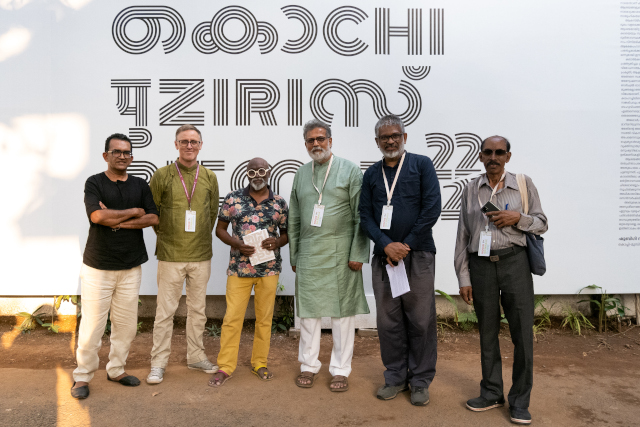
Tushar Gandhi, author and great-grandson of Mahatma Gandhi and Kasturba Gandhi visited Kochi-Muziris Biennale on January 15, 2023 and was welcomed by Bose Krishnamachari, President of Kochi Biennale Foundation. (Left-Right) Suku Yesudasan (Cartoonist and Friends of Tibet Campaigner); Philip Ringland (Kochi Biennale Foundation); Bose Krishnamachari (President, Kochi Biennale Foundation); Tushar Gandhi; Sethu Das (Founder, Friends of Tibet) and Suresh Babu (Friends of Tibet Research) at Aspinwall House, Fort Kochi, India. (Photo: Akhila Shahid / Kochi-Muziris Biennale)

Photo + Video Gallery
Ranjana Dave, artist, author and the editor of Improvised Futures: Encountering the Body in Performance (2021) writes about 'Shadow Circus' exhibition currently held at the Kashi Townhouse as a part of the fifth edition of 2022 Kochi-Muziris Biennale. This story was published in the print edition of Frontline magazine dated February 24, 2023.
In 1998, India-based Tibetan filmmaker Tenzing Sonam and his partner Ritu Sarin directed a BBC documentary called 'The Shadow Circus: The CIA in Tibet,' which opened a secret chapter in the history of Tibet's resistance to Chinese occupation: about a bloody guerrilla war that continued from 1956 to the late 1960s, funded, trained, and supported by the Central Intelligence Agency, the US' foreign intelligence service. In 1969, the CIA suddenly cut off support to the project, code-named ST Circus, in the run-up to President Richard Nixon's 1972 visit to China and his meeting with Premier Mao Zedong.
The Shadow Circus later expanded into an art exhibition comprising letters, photographs, objects, and archival footage from related documentaries that travelled to Berlin and New Delhi. It has reached Kochi now: the exhibition titled "Shadow Circus: A Personal Archive of Tibetan Resistance (1957-1974)" is part of the fifth edition of the Kochi Muziris Biennale (December 12, 2022-April 10, 2023). Put together by Sarin and Sonam in collaboration with curator Natasha Ginwala, it is spread across four rooms in Kashi Townhouse, which stands on a quiet lane in Fort Kochi.
A letter from September 29, 1965, is from one John to a Larry. It begins: "...it must be understood that I again cannot justify several thousand Rupees each month for the education of students who have nothing to do with our activity. I am willing to help train perhaps several students as interpreters/ translators; that is to say I can provide for English language training for several students who will later be used by us here, with you or elsewhere such as Kathmandu. But only for this purpose; I cannot justify students of chemistry, or mathematics etc." "Larry" was a CIA codename for Lhamo Tsering, one of the leaders of the Tibetan struggle.
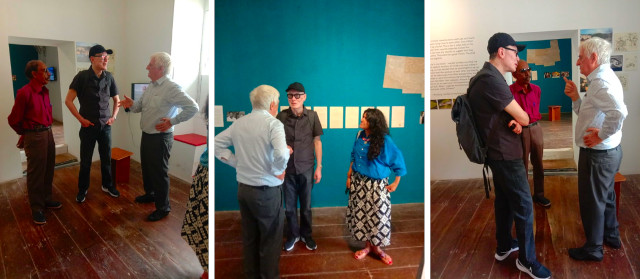
Claude Arpi, French author and Tibet expert visits "Shadow Circus: A Personal Archive of Tibetan Resistance (1957-74)" exhibition by Ritu Sarin and Tenzing Sonam at Kashi Townhouse, Fort Kochi, a Kochi-Muziris Biennale venue on February 4, 2023. He was welcomed by Ritu Sarin and Tenzing Sonam (White Crane Films); Natasha Ginwala (Curator); and Suresh Babu (Friends of Tibet Foundation).(Photo: Kochi-Muziris Biennale)
Tsering was the key liaison between the resistance members and the CIA. He was also Sonam's father. The exhibition, which gets its title from the CIA codename for its Tibet training programme, makes extensive use of Tsering's personal archive. Presented alongside letters, photographs, drawings, a "Guerrilla Handbook", and books on Tibet is audiovisual material-interviews with former CIA officials and Tibetan guerrilla fighters-collected by Sonam and Sarin. All of them serve to throw light on the connections between Cold War histories and this largely obscure struggle from the mid 20th century. This makes the exhibition itself an act of resistance against dominant narratives that privilege non-violence as a key feature of Tibet protest movements.
Appeal to the US: "Shadow Circus" opens with a typewritten nine-page letter by Tibetan resistance leader Andrug Gompo Tashi, addressed to "the peace and freedom loving President of the United States of America". A trader from Kham in eastern Tibet, Gompo Tashi named the resistance Chushi Gangdruk (Four Rivers Six Ranges), after the traditional name for his home region. References to "C.G." abound in Larry's correspondence with the CIA.
Yellowed with age, Gompo Tashi's letter from 1959 speaks on behalf of the Tibetan people and is ostensibly directed to Dwight Eisenhower, the then American President. It details the insidious ways in which the Chinese government made overtures to Tibet, eventually suppressing Tibetan autonomy, that led to the 14th Dalai Lama's escape to India in 1959. He describes the forced deportation of Tibetan youth to other Chinese territories for education, often without the consent of their parents, or to join sightseeing parties from Tibet on a tour of China. On their return, they were forced to spread Chinese propaganda.
Gompo Tashi believed that the US could act as an ideological counterweight to China. His letter talks of how the Chinese communists collected millions of dollars from Tibetan subjects for the liberation of Formosa and Korea, justifying the demand by citing the need to combat the US' nuclear arsenal. This cost the Tibetans dear; some of them had to sell houses, animals, grains, food, and tea to come up with the money asked of them. While the Chinese started out by critiquing systems of serfdom in Tibet, they eventually forced Tibetans to work without pay on large-scale construction and infrastructure projects, Gompo Tashi writes. The letter ends with an appeal to the US government to lend its support to the liberation of Tibet so that the language, culture, and identity of occupied territories are not eroded.
Larger Global Strategy: In 1956, Gompo Tashi sent a delegation of men to India to explore the possibility of foreign support for the resistance. In Kalimpong, they met the Dalai Lama's older brother, Gyalo Thondup, who facilitated a connection with the US government. The CIA supported and financed the armed struggle in Tibet as part of a wider global strategy to counter and limit communist influence.
Six men from Gompo Tashi's group were flown to the island of Saipan, near Guam in the South Pacific, for training in warfare and espionage. They were subsequently airdropped into Tibetan territory to join guerrilla forces and make contact with the Dalai Lama. Encouraged by the surfeit of intelligence from the operators they had trained, the CIA built a training facility for members of the Tibetan resistance in the US, at Camp Hale in Colorado. They participated in coordinating and tracking the 14th Dalai Lama's escape to India in 1959.
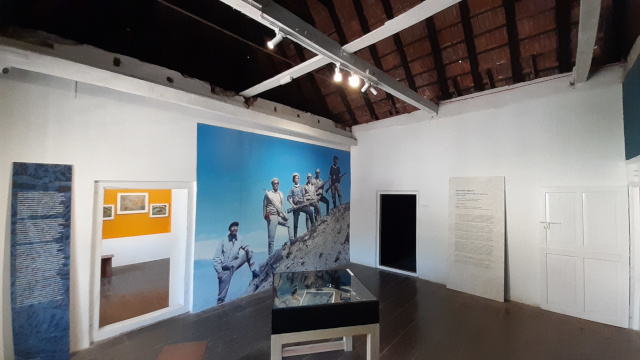
In an essay for Civil Lines: New Writing in India (Volume 4, 2001), Tenzing Sonam recounts the experience of meeting relatives in Nagatsang, his father's village, on his first visit to Tibet in the mid 1990s. Living in exile, he observes, allowed him, ironically, to cultivate strong nationalistic aspirations, away from the Chinese state's systemic structures of control, disseminated as fear and paranoia. "I have had the freedom to develop and express my identity as a Tibetan more completely than my relatives here... Here, Tibetans have been a minority for so long that for them to even consider the notion of a separate and independent Tibet is unimaginable," he writes.
Even as the textual materials in the exhibition record the erasure of Tibetan culture, video footage, provided by Sarin and Sonam along with other 20th century documentaries on Tibet, offer a sense of the geo-cultural fabric that members of the resistance sought to preserve. This includes Inside Tibet (1943), a documentary made by two American agents who travelled to establish diplomatic contact with the Dalai Lama on behalf of the US President Franklin D. Roosevelt during the Second World War. The accompanying text notes how the film captures aspects of community life and practices of Tibet prior to the Chinese invasion in 1950.
First-person texts by Sonam, beginning with his birth in a Darjeeling hospital in 1959 while his father trained with the CIA in Virginia and at Camp Hale, build and foreground a personal narrative as one moves between spaces in the exhibition. The alpine terrain of Camp Hale reminded the trainees of home: they called it dhumra (the garden). The covertness of their collaboration was intricately choreographed: meetings with CIA operatives in Kolkata involved prearranged symbols, rendezvous spots and circuits, with information often exchanged in quick encounters between agents and members of the resistance.
"Resistance" as an idea gestures towards collective participation, with individual identity often obscured by the need for secrecy. A section of the exhibition focusses on the air missions into Chinese-occupied Tibetan territory, highlighting the individual choices made by fighters as they fought for their homeland.
Bhusang, a member of the final air mission in 1960, narrates the timeline of his capture by Chinese authorities and the split-second decisions his team had to make about biting into their cyanide capsules to die by suicide. An entire wall is dedicated to headshots of resistance members who were airdropped into Tibet.
"Shadow Circus" puts names, faces, and voices to the Tibetan fighters and CIA officers who collaborated in the fight to free Tibet. The reality of the struggle is conveyed by everyday problems, like the bureaucratic tedium of running a long-term and long-distance movement. We see this in the letters to Tsering from his CIA contacts, with their pointed questions about money spent, budget allocations, and funding limits. In the letter quoted towards the beginning of the article, Tsering's CIA point-of-contact, John, expresses disappointment in the English-language skills of trained interpreters which, according to him, remain inadequate in spite of the funds allocated for the purpose.
Frequent references to the "bankers" who decide which causes merit funding (and which ones do not) lay bare the transactional complexity of this relationship, with CIA support carefully weighed against strategic objectives and intelligence-gathering priorities.
In 1969, when the CIA abruptly cut off its support to the movement, the resistance continued working in Nepal's Mustang region, which shared a border with the Tibetan plateau. In 1974, the Nepal government demanded the surrender of the remaining guerrillas. The Dalai Lama sent the guerrillas an audiotaped message. Acknowledging the disappointment of a failed struggle, he urged the fighters to lay down arms. Speaking in Sarin and Sonam's documentary, Mustang resistance fighter Ugyen Tashi recalls that some of them cried on hearing the Dalai Lama's message. For them, it was a spiritual and operational directive.
In his message, the Dalai Lama uses an inclusive "we," suggesting a shared community that includes the guerrilla fighters. Many resistance members, including Sonam's father, would later be integrated into Tibetan society-in-exile (Tsering became a minister in the Dalai Lama's government-in-exile). Their inclusion, however, did not extend into a recognition of what they did during the resistance. Their actions as guerrilla fighters-learning warcraft, how to make bombs, conduct espionage, or the use of guns and cyanide capsules-destabilise the "non-violent" image of the struggle for Tibet's freedom.
DOWNLOAD: "Shadow Circus Notes" by Tenzing Sonam 
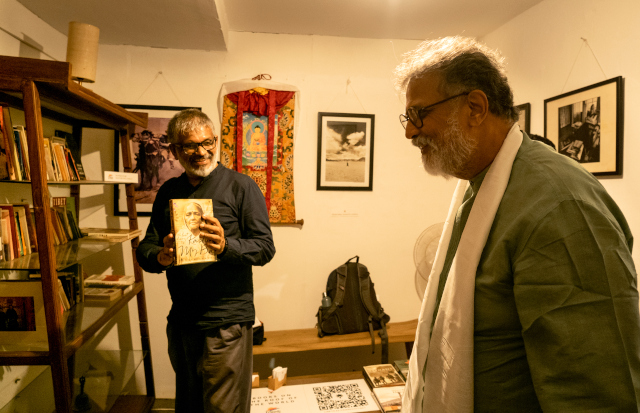
Tushar Gandhi (R), great-grandson of Mahatma Gandhi is shown a copy his book "The Lost Diary of Kastur, My Ba" from the Friends of Tibet collection by Sethu Das, founder of Friends of Tibet during the recent visit of Gandhi to "Books from the Roof of the World" Reading Room activated by Friends of Tibet, a part of the "Shadow Circus" exhibition at the Kashi Townhouse. (Photo: Akhila Shahid / Kochi-Muziris Biennale)
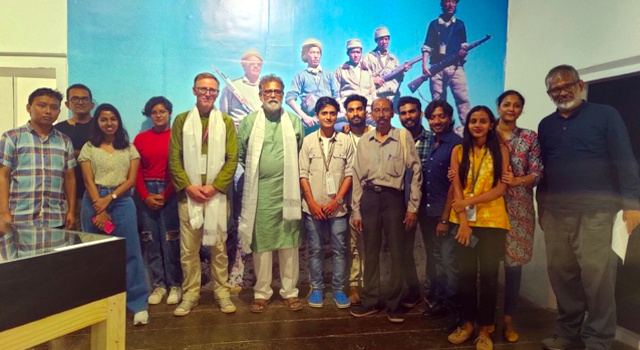
"I am privileged to visit Shadow Circus exhibition developed by Ritu Sarin and Tenzing Sonam in collaboration with Nathasha Ginwala about the armed resistance of the Tibetans who were evicted from their homeland. A chapter in history which the World has turned a blind eye to, needs to be reminded about the story of the few handful of those who fought till the last with whatever they had for the quality and the right of the people to be free in their home land. This exhibition reminds us of that determination and that passion. This will remind everyone about the heroism of the Tibetan people and the inclusive ideas with which India was founded. Pandit Jawaharlal Nehru welcomed the exiled Tibetan people into India and gave them a home. This is to the spirit of both Indians and Tibetans."
Tushar Gandhi (Author and great-grandson of Mahatma and Kasturba Gandhi)
| BACK TO TOP |

Friends of Tibet, PO Box 16674, Mumbai 400050, India.
Email: freedom@friendsoftibet.org Web: www.friendsoftibet.org
Friends of Tibet is a people's movement to keep alive the issue of Tibet through direct action. Our activities are aimed at ending China's occupation of Tibet and the suffering of the Tibetan people. Friends of Tibet supports the continued struggle of the Tibetan people for independence. Friends of Tibet is also one of the principal organisers of World Tibet Day around the world.
⋯
Digital Support: Design & People, India + Ibiblio Digital Library & Archive Project, University of North Carolina, USA
⋯
|